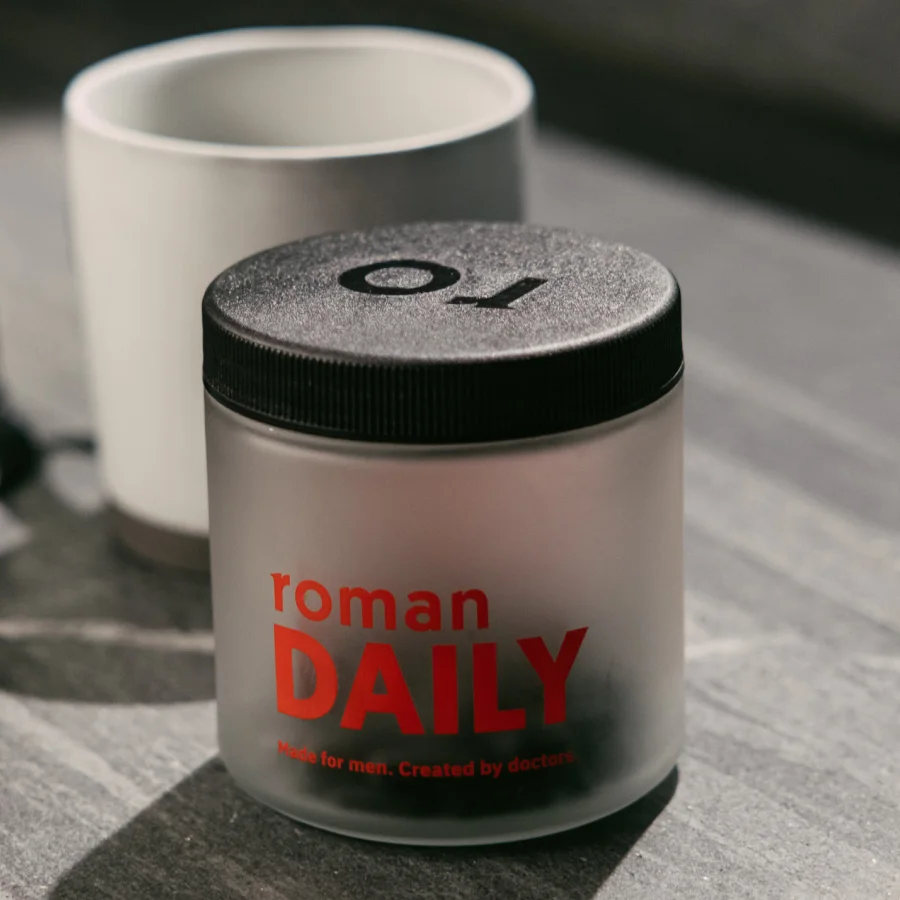Here's what we'll cover
Here's what we'll cover
People have always been searching for ways to continue feeling young. While there is no way to turn back time, researchers are finding there may be some anti-aging supplements that can help reverse or slow the signs of aging. Currently, nicotinamide adenine dinucleotide (NAD) boosters are getting a lot of hype for their claimed anti-aging benefits. Let’s explore what science has to say.
What are NAD supplements?
NAD supplements were created to help boost the amount of NAD+ circulating in your bloodstream. NAD is a coenzyme that supports cell metabolism and many other reactions in the body.
NAD exists in two forms in the body: NAD+ and NADH. NAD+ is the oxidized form, which means it’s ready to pick up an electron from another molecule to transport it where it needs to go. NADH is the reduced form and has regained an electron.
NAD+ production and the amount of NAD circulating through the body naturally decline as you get older. While this is a natural process, low NAD levels can impact the body’s ability to work efficiently and result in lower energy production.
For example, low NAD+ may cause problems with how the mitochondria—the area of cells where energy is created—function.
Problems with the mitochondria can lead to unhealthy cell function. Research is starting to show a connection between declining NAD levels and the development of many age-related health conditions, like changes to heart health and metabolism.
Taking an NAD supplement helps raise the levels of NAD+ circulating in the body, which may help slow down the health changes associated with aging (Mehmel, 2020).
How do NAD supplements work?
Most NAD supplements currently on the market are made with precursors to NAD. A precursor is a substance that the body is able to transform into another form during a metabolic reaction.
Typically, the precursors the body uses to create NAD are amino acids or vitamins found in food, such as tryptophan, aspartic acid, and niacin (also known as vitamin B3) (Mehmel, 2020). Human clinical trials show taking a supplement or eating foods with precursors helps increase NAD levels (Dellinger, 2017).
Here are some of the popularly researched precursors frequently used in supplements (Mehmel, 2020):
Nicotinamide mononucleotide (NMN)
Nicotinic acid (NA)
Nicotinamide (NAM)
Tryptophan (TRP)
Nicotinamide phosphoribosyltransferase (NAMPT)
Benefits of NAD supplements
There are numerous reported benefits of taking NAD supplements, though more research is needed to truly understand the effects of taking NAD+ boosters. Here are some of the potential benefits of taking these supplements:
May slow down aging
One of the biggest claims of these supplements is anti-aging and life-extending benefits. Some research suggests NAD+ levels decrease as part of the aging process, and increasing those levels through supplements may reverse some of the signs of aging (Mehmel, 2020).
These effects have led some people to claim the supplement acts as a “fountain of youth” since it may reverse aging on the cellular level. While we don’t have enough evidence that any supplement can have quite that effect, NAD shows some promise.
NAD is believed to play an essential role in rebuilding and protecting against DNA damage. Its effects on DNA may be why NAD supplements may help maintain a higher quality of life and potentially increase one’s healthy lifespan (Mehmel, 2020).
May protect cognitive function and memory
Clinical trials and animal studies suggest that NAD helps improve memory and learning (Johnson, 2018). Research shows that NAD plays a role in gene expression (which genes are turned on or off), DNA repair, and repairing cells (Mehmel, 2020).
DNA damage and changes in cellular function increase your risk for neurodegenerative conditions, such as Alzheimer’s disease, dementia, and Parkinson’s disease. Studies show that increasing NAD levels can help protect against the damage that can lead to these conditions and may slow down their progression (Johnson, 2018).
May increase energy levels
As discussed above, NAD is essential for mitochondrial function and energy production, specifically for producing ATP (Mehmel, 2020). So, taking an NAD supplement may have a positive impact on energy levels.
May reduce blood pressure
High blood pressure is one of the major risk factors for cardiovascular conditions like heart attack, stroke, heart failure, and atherosclerosis. Research suggests that maintaining healthy NAD levels may help protect the health of the cardiovascular system and lower blood pressure levels. Potential heart-healthy benefits of NAD+ boosters include (Mehmel, 2020):
Reducing stiffness in blood vessels and arteries
Reducing inflammation
Protecting blood vessels from damage
Research suggests NR supplements help lower systolic blood pressure and reduce stiffness in the aorta, the main artery leaving the heart (Mehmel, 2020).
May reduce cholesterol
Cholesterol is a type of lipid that can be consumed in food and is produced by the body. Cholesterol does have many benefits for the body, but too much can increase the risk for heart problems.
Researchers are finding that changes in a group of proteins called sirtuins may impact how your body metabolizes lipids. The studies suggest that NAD+ levels influence the activity of sirtuins. Therefore, taking NR or NMN supplements may help lower cholesterol levels and improve liver health (Mehmel, 2020).
May reduce cancer risk
A lack of NAD interferes with DNA and cell repair, which may increase the risk for cancer-causing errors to occur. For example, in animal studies, an NAD+ deficiency increased the sensitivity to UV rays and impaired the ability to heal skin cells after sun damage, increasing the risk for skin cancer (Fania, 2019).
Side effects of NAD supplements
It appears that NAD supplements are safe, and most people don’t experience any side effects when taking them. Still, research is in the early stages, and we don’t really know if there are any long-term side effects of NAD+ supplements.
Which dose and precursor should you take?
NAD+ supplements are still fairly new to the market. There are some studies to support the claimed health benefits of these supplements. However, many of these studies are done on animals or only test short-term changes. More research is needed to understand the long term effects of taking NAD+ boosters.
The clinical studies available use different doses and precursors for NAD, and no one specific recommendation has been established. Doses ranged from 100 mg to 2,000 mg (2 grams) in the studies (Mehmel, 2020).
You may want to try different types and see how your body responds to the different forms of NAD precursors. Talk with your healthcare provider to see if an NAD supplement is right for you and which type and dose they recommend.
Alternative ways to boost NAD+ levels
It’s possible to boost your NAD+ levels without taking a supplement. Here are a few ways studies suggest you can increase your NAD levels naturally and support healthy aging:
Exercise consistently: Studies suggest that cardio and strength training workouts, like running, high-intensity interval training (HIIT), and weight lifting, help increase and preserve NAD+ levels (de Guia, 2019).
Eat a nutritious diet: Eating a healthy diet full of foods containing dietary precursors to NAD and activators for the biosynthesis of NAD (like the antioxidant resveratrol in grapes) may help keep your NAD+ levels higher. Some foods with NAD precursors include turkey, cucumber, cabbage, avocado, tomato, and shrimp (Poljsak, 2020).
Wear sunscreen: Since NAD+ helps to repair cells after damage caused by sun exposure, wearing sunscreen and protective clothing may help preserve NAD+ levels (Fania, 2019).
Reduce calories: Research suggests that reducing calories (within a healthy range) and intermittent fasting may help preserve NAD+ levels (Ung, 2021).
DISCLAIMER
If you have any medical questions or concerns, please talk to your healthcare provider. The articles on Health Guide are underpinned by peer-reviewed research and information drawn from medical societies and governmental agencies. However, they are not a substitute for professional medical advice, diagnosis, or treatment.
de Guia, R. M., Agerholm, M., Nielsen, T. S., Consitt, L. A., Søgaard, D., Helge, J. W., et al. (2019). Aerobic and resistance exercise training reverses age-dependent decline in NAD+ salvage capacity in human skeletal muscle. Physiological Reports , 7 (12), e14139. doi: 10.14814/phy2.14139. Retrieved from https://www.ncbi.nlm.nih.gov/pmc/articles/PMC6577427/
Dellinger, R. W., Santos, S. R., Morris, M., Evans, M., Alminana, D., Guarente, L., et al. (2017). Repeat dose NRPT (nicotinamide riboside and pterostilbene) increases NAD+ levels in humans safely and sustainably: a randomized, double-blind, placebo-controlled study. NPJ Aging And Mechanisms Of Disease , 3 , 17. doi: 10.1038/s41514-017-0016-9. Retrieved from https://www.ncbi.nlm.nih.gov/pmc/articles/PMC5701244/
Fania, L., Mazzanti, C., Campione, E., Candi, E., Abeni, D., & Dellambra, E. (2019). Role of nicotinamide in genomic stability and skin cancer chemoprevention. International Journal Of Molecular Sciences , 20 (23), 5946. doi: 10.3390/ijms20235946. Retrieved from https://www.ncbi.nlm.nih.gov/pmc/articles/PMC6929077/
Johnson, S. & Imai, S. I. (2018). NAD + biosynthesis, aging, and disease. F1000Research , 7 , 132. doi: 10.12688/f1000research.12120.1. Retrieved from https://www.ncbi.nlm.nih.gov/pmc/articles/PMC5795269/
Mehmel, M., Jovanović, N., & Spitz, U. (2020). Nicotinamide riboside-the current state of research and therapeutic uses. Nutrients , 12 (6), 1616. doi: 10.3390/nu12061616. Retrieved from https://www.ncbi.nlm.nih.gov/pmc/articles/PMC7352172/
Poljsak, B., Kovač, V., & Milisav, I. (2020). Healthy lifestyle recommendations: do the beneficial effects originate from NAD+ amount at the cellular level?. Oxidative Medicine And Cellular Longevity , 8819627. doi: 10.1155/2020/8819627. Retrieved from https://www.ncbi.nlm.nih.gov/pmc/articles/PMC7752291/
Ung, TPL., Lim, S., Solinas, X. Mahou, P, Chessel, A, Marionnet, C, et al . (2021). Simultaneous NAD(P)H and FAD fluorescence lifetime microscopy of long UVA–induced metabolic stress in reconstructed human skin. Scientific Reports, 11 , 22171. doi: 10.1038/s41598-021-00126-8. Retrieved from https://www.nature.com/articles/s41598-021-00126-8












